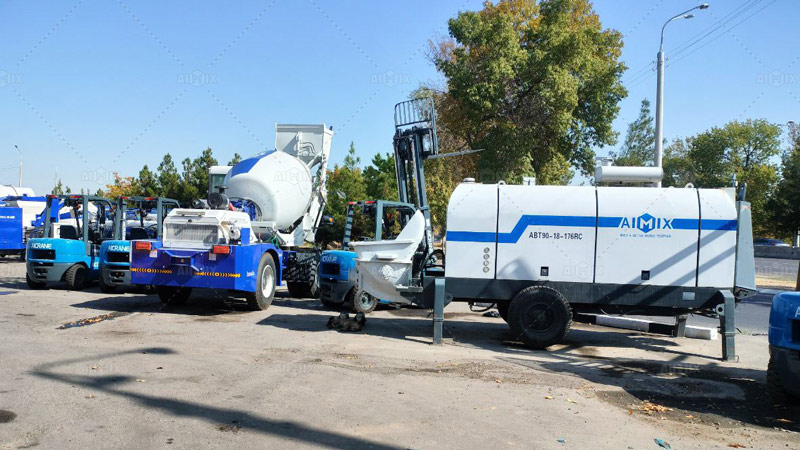In today’s competitive construction industry, selecting the right equipment is critical to achieving efficiency, safety, and profitability. Among the many choices available, concrete pumps have become increasingly popular for projects of varying sizes. From small residential builds to larger commercial or infrastructure developments, the use of concrete pumps can have a significant impact on return on investment (ROI). This article explores which construction scenarios benefit most from concrete pumps(venta de bomba de concreto) and whether the ROI justifies the investment.
Understanding the Versatility of Concrete Pumps
Concrete pumps come in various types, including the concrete mixer pump and the concrete trailer pump(bomba estatica hormigon). Each type offers unique advantages that make them suitable for specific construction scenarios. Whether working in remote areas, urban settings, or complex terrain, these machines help streamline concrete placement by reducing manual labor and time.
For residential projects, especially those with limited site access, a concrete trailer pump can be easily transported and set up in tight spaces. On the other hand, a concrete mixer pump, which integrates mixing and pumping functions, is ideal for small to medium-sized construction projects, enabling on-site production and continuous pouring.
Scenarios Where Concrete Pumps Excel
1. Urban Construction with Restricted Access
In densely populated urban areas, space constraints can make traditional concrete pouring methods inefficient and time-consuming. Concrete pumps solve this problem by transporting concrete vertically or horizontally through pipelines. This capability is especially useful when building multi-story structures, underground parking lots, or basements.
2. Mountainous and Remote Project Locations
For construction projects in mountainous regions or remote rural areas, logistics and access can be a challenge. Using a concrete pump simplifies concrete delivery, especially when paired with a mobile batching system. The pump can operate on uneven terrain and deliver precise amounts of concrete to hard-to-reach areas, reducing the need for manual transport and boosting productivity.
3. Medium-Scale Infrastructure Developments
Projects like bridges, tunnels, and small dams fall into the medium-scale category where consistent concrete flow is crucial. Concrete pumps ensure uniform distribution without cold joints, improving structural quality. This level of performance is particularly achievable with a high-efficiency concrete mixer pump(bomba hormigonera), which combines the batching and pumping into one seamless process.
Comparing ROI: Concrete Pump vs. Traditional Pouring
Investing in a concrete pump for sale may seem costly initially, but the long-term ROI can be considerable. Traditional pouring methods often require more labor, longer timeframes, and higher operational costs. In contrast, concrete pumps improve site productivity, reduce waste, and minimize labor costs by automating the delivery process.
For example, one small-to-mid-size project can benefit from saving days of labor, avoiding mixer truck delays, and ensuring continuous operation even with variable weather conditions. This operational advantage directly translates into financial gains, reducing the overall construction schedule and allowing contractors to take on more projects within the same timeframe.
Factors That Influence ROI Differences
1. Equipment Lifespan and Maintenance
Concrete pumps are designed for durability and extended service life. Regular maintenance can keep them running efficiently for many years. When compared with the repetitive costs of renting or outsourcing concrete delivery, owning a pump can yield better ROI within just a few projects.
2. Local Labor and Material Costs
In countries like Peru or Chile, where construction labor costs are variable and remote project locations are common, the use of a concrete pump significantly reduces dependence on manual handling. This not only improves safety but also enhances ROI through cost efficiency.
3. Project Frequency and Scale
For contractors handling frequent or large-scale builds, the savings multiply. The more a concrete pump is used, the faster it pays for itself. Therefore, contractors who work regularly in rural or high-volume environments are likely to see a larger ROI difference compared to occasional users.
Conclusion: Is the ROI Difference Significant?
Yes, the ROI difference between using a concrete pump and relying on manual or traditional methods can be substantial. When evaluating a concrete pump for sale, contractors should consider not just the initial investment but also the potential time savings, labor reduction, and increased project throughput. Whether you choose a concrete mixer pump for smaller sites or a concrete trailer pump for versatility and mobility, the long-term benefits often outweigh the costs.
Ultimately, understanding the project environment, operational needs, and cost structures will help you determine if a concrete pump is the right solution for maximizing ROI in your construction scenarios.


Comments
No comments yet. Be the first to react!